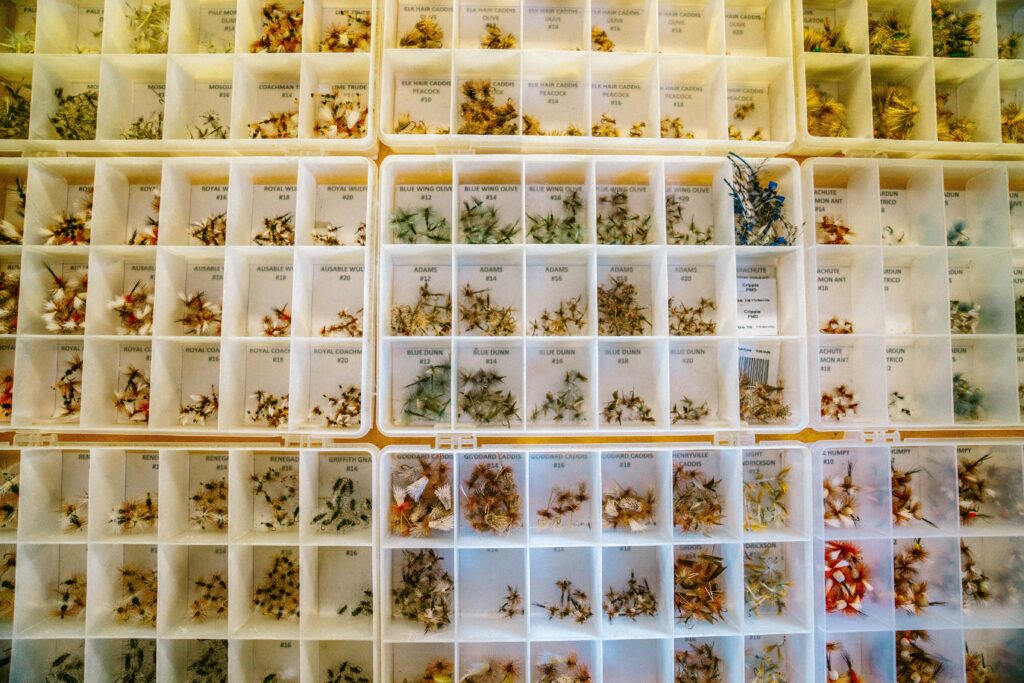It’s one of the phrases I hear all the time that needs to go. People are able to have healthy boundaries with their work and personal life, or perhaps they are just able to willfully direct their attention (both good skills) and they attribute it to “being able to compartmentalize”. The problem with this is that it gives us a wrong view of ourselves and conveys to others a skill that they really shouldn’t be striving for.
Our fractured view of self
The idea that we can exist in “compartments”, with our social self in one box, our work self in another etc. is frankly a myth and it’s hurting us. We are integrated beings with bodies and nervous systems that are very much involved with our mental, emotional, and social wellbeing.
Research in recent years has shown that our bodies are very much involved with our mental health. Social engagement, community, healthy relationships are more than just good ideas. They help us self-regulate and become more resilient. Contrary to what our individualized culture tells us, we do need others. That we were created for community is not an opinion, it’s neurology. Community is a physical need.
All of these aspects of ourselves are part of an integrated whole that although our sciences (psychology, neurology, theology, sociology, etc.) understand each on its own, were meant to be lived as a single lived experience.
Our fractured view of life
We do the same thing with life: we see work, home, leisure, and so forth as separate compartments and we strive to do with our lives what we imagine we do with ourselves. We come home and “leave work at work” or at least try to. Don’t misunderstand me, a healthy work-life balance and healthy boundaries are important. The problem with this view is that it misses how we actually experience our world. Let’s look at me for example:
I’m a trauma therapist. I spend 20-25 hours a week sitting with clients and holding space for them as they process their trauma, anxiety, etc. I have about another 20 hours in paperwork, treatment planning, and professional development. I have a wife, a newborn who is deaf, and a few hobbies and a writing side hustle to attend to.
Boundaries are good. Not taking on too much and keeping a close watch on my own mental health is good. And at the end of the day, I’ve only got one nervous system. That means that the vicarious trauma, stresses of my work and daily life don’t exist in neat little boxes allowing me to hop from one to another. I may be good at keeping my attention on the task at hand like not allowing work to creep into my time with my family, but the total cumulative toll of everything going on in my life comes with me wherever I go.
Better than compartmentalizing
So let’s talk resilience (since that’s what this blog is primarily about after all). If the path to resiliency isn’t attempting to “compartmentalize” myself and my life, how do I handle everything I have going on and somehow manage to stay afloat?
Experiencing
One of the things we’re taught very early on when learning Somatic Experiencing®, is the difference between expressing and experiencing. We love expressing, especially when it means things like giving full vent to our outrage or going to the gym to “get it out” (spoiler alert: you actually don’t you just get tired). To express something is to let an internal condition like an emotion dictate behavior. We punch the pillow in the therapist’s office, imagining that the catharsis that ensues is therapeutically beneficial. Unfortunately, catharsis actually does very little to elicit long term change.
To slow down and experience something though, to notice that emotion in your body, notice what other emotions may be there with it, follow it as it changes (because it will!) is quite another thing. This may sound counterintuitive but very often when we get ‘stuck in’ something, like stress from work, it’s at least in part because we haven’t slowed down enough to really just be with it for a time.
Accepting
We live in a culture that is currently steeped in a cocktail of breakneck speed, the illusion of limitless capacity, and the illusion of control. As such, a good number of my clients are regularly surprised at both how hard and how healing it can be to slow down and let go of the illusion of control. We are finite beings, we’re meant to be. Some things are out of our control and that’s OK.
Transitioning
I had a classmate in grad school, a single mom, who confessed once in class how bad she felt that sometimes on the way home after work, clients, and classes, that she would pull over and just take a few minutes to herself before going to see her daughter who has been waiting for her all day.
The professor, a mentor who introduced me to Somatic Experiencing, gently corrected her. The little girl at home had no concept of the stresses out in the world that mommy had been dealing with all day and likewise would have no concept that mommy might be responding to those stresses rather than her should mommy come home an agitated ball of stress from the day.
How we transition between environments matters. It’s something that I recommend to many of my clients and I would recommend to you: take even just a few minutes to sit, just be still and silent, when transitioning between work, home, activities, and see what happens. Resiliency is not found in imagining ourselves and our worlds into little boxes. It’s found in slowing down and attending to our own process well.

